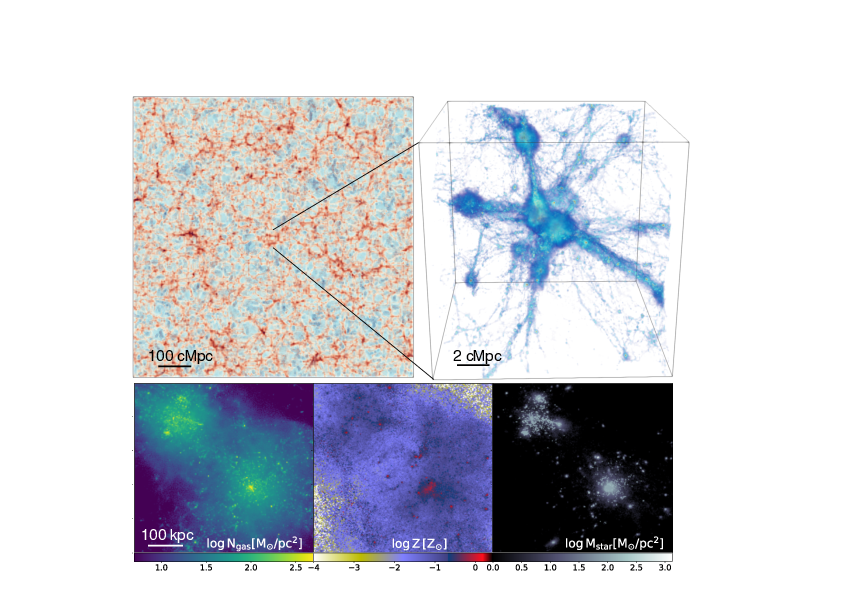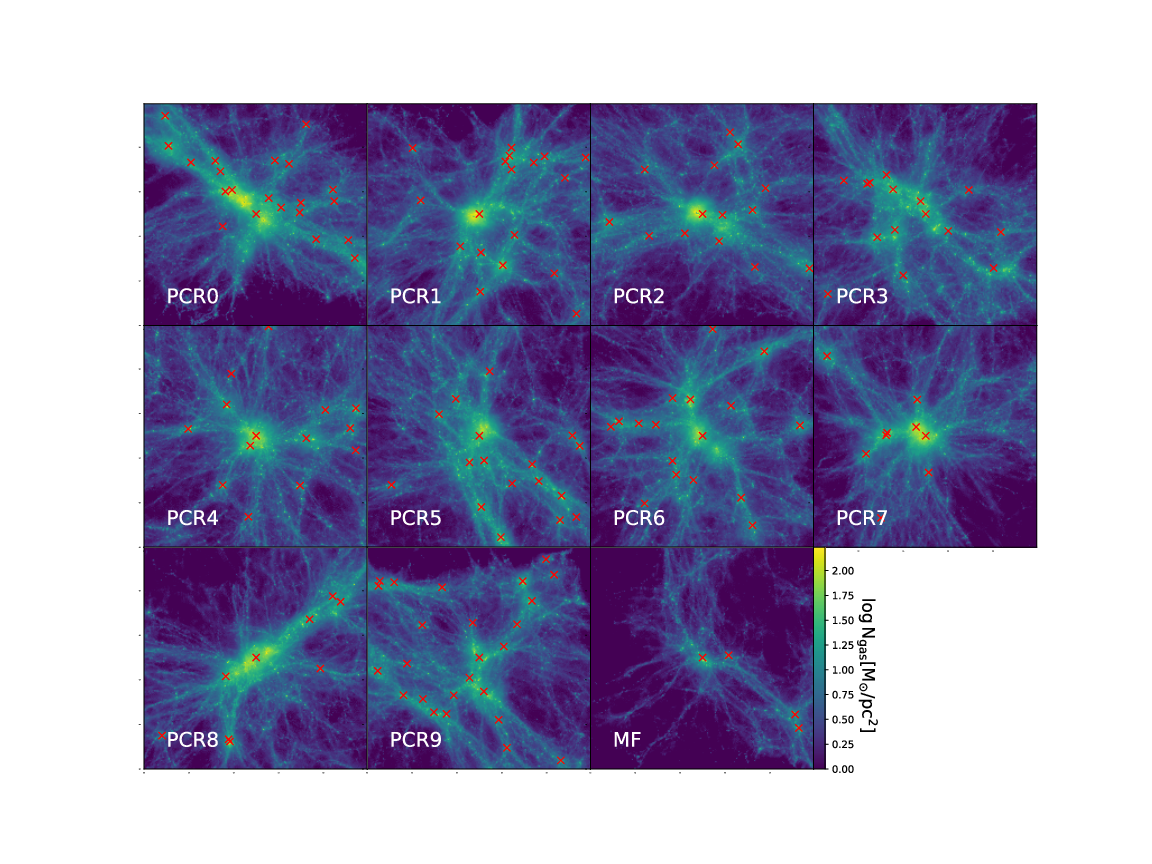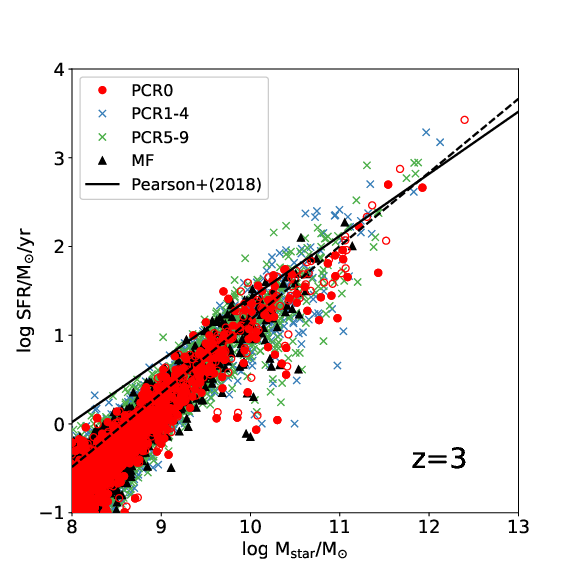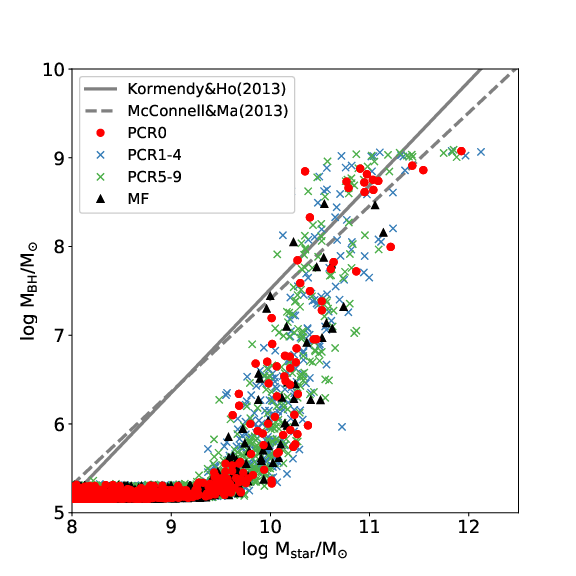研究成果・発表論文
FOREVER22: galaxy formation in protocluster regions
Yajima, Hidenobu, Abe, Makito, Khochfar, Sadegh, Nagamine, Kentaro, Inoue, Akio K., Kodama, Tadayuki, Arata, Shohei, Dalla Vecchia, Claudio, Fukushima, Hajime, Hashimoto, Takuya, Kashikawa, Nobunari, Kubo, Mariko, Li, Yuexing, Matsuda, Yuichi, Mawatari, Ken, Ouchi, Masami, & Umehata, Hideki
要旨
We present results from a new cosmological hydrodynamics simulation campaign of protocluster (PC) regions, FOREVER22: FORmation and EVolution of galaxies in Extremely overdense Regions motivated by SSA22. The simulations cover a wide range of cosmological scales using three different zoom set-ups in a parent volume of (714.2 cMpc)3: PCR (Proto-Cluster Region; V = (28.6 cMpc)3, SPH particle mass, mSPH = 4.1 × 106 M⊙, and final redshift, zend = 2.0), BCG (Brightest proto-Cluster Galaxy; V ~(10 cMpc)3, mSPH = 5.0 × 105 M⊙ and zend = 4.0), and First (V ~(3 cMpc)3, mSPH = 7.9 × 103 M⊙ and zend = 9.5) runs, that allow us to focus on different aspects of galaxy formation. In the PCR runs, we follow 10 PCs, each harbouring 1-4 SMBHs with MBH ≥ 109 M⊙. One of the PC cores shows a spatially close arrangement of seven starburst galaxies with SFRrsim100 M⊙ yr-1 each, that are dust-obscured and would appear as submillimetre galaxies with flux ≳1 mJy at 1.1 mm in observations. The BCG runs show that the total SFRs of haloes hosting BCGs are affected by AGN feedback, but exceed 1000 M⊙ yr-1 at z ≲ 6. The First runs resolve mini-haloes hosting population (Pop) III stars and we show that, in PC regions, the dominant stellar population changes from Pop III to Pop II at z ≳ 20, and the first galaxies with SFRrsim18 M⊙ yr-1 form at z ~10. These can be prime targets for future observations with the James Webb Space Telescope. Our simulations successfully reproduce the global star formation activities in observed PCs and suggest that PCs can kickstart cosmic reionization.








 Ja En
Ja En